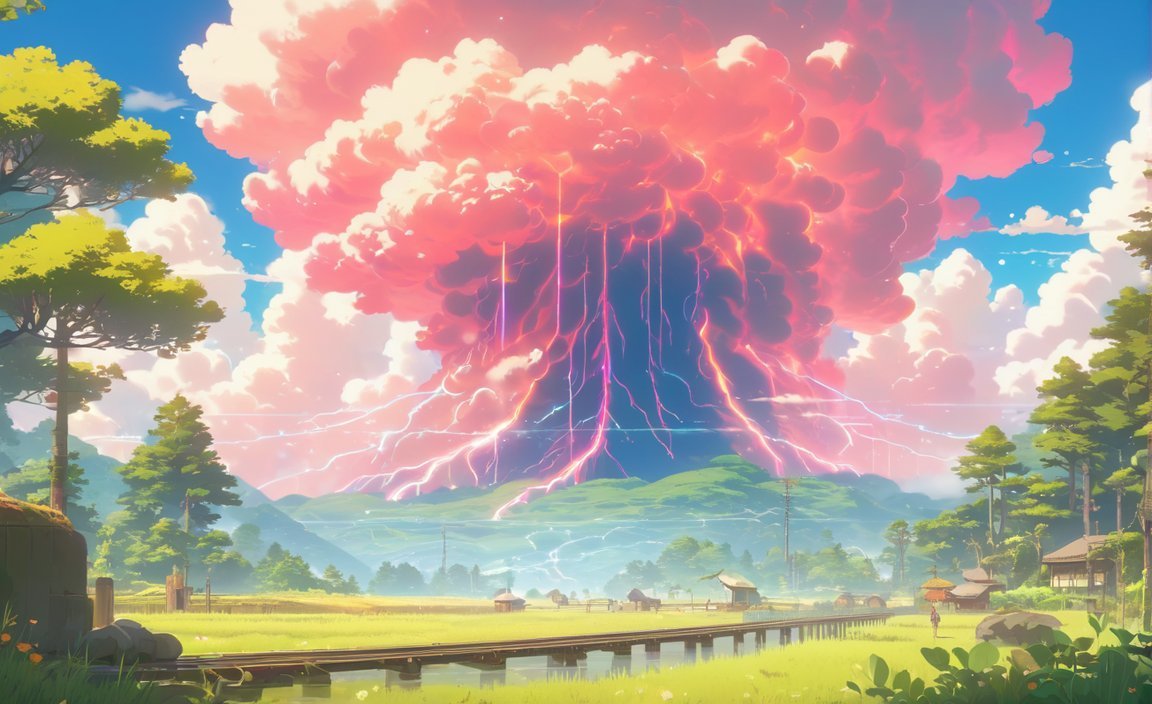Geothermal energy is one of the most amazing sources of renewable energy on the planet. It comes from the heat generated by the rocks under the earth’s surface, which can reach super high temperatures, up to 370 degrees Celsius. Geothermal energy can be used for heating, cooling, and electricity production, and it has many benefits for the environment and society. In this article, we will explore some of the fun facts about geothermal energy and how it works.

Geothermal Energy is Older Than Humans
Geothermal energy is not a new invention. It has been around for billions of years, since the formation of the earth. The earth’s core is made of molten iron and nickel, which creates a lot of heat due to radioactive decay and gravitational pressure. This heat travels through the mantle and the crust, where it can be tapped by geothermal wells and plants.
Some of the earliest uses of geothermal energy date back to ancient times, when people used hot springs and geysers for bathing, cooking, and healing. The first geothermal plant was built more than 100 years ago in Italy, and since then, many countries have developed geothermal projects for various purposes.
Geothermal Energy is Clean and Renewable
One of the main advantages of geothermal energy is that it is a clean and renewable source of energy. Unlike fossil fuels, geothermal energy does not need fuel and does not produce air pollution or greenhouse gases. It also does not depend on the weather or the time of day, unlike solar and wind energy. Geothermal energy can provide a stable and reliable supply of electricity and heat, without harming the environment.
Geothermal energy is also very efficient and cost-effective. Once the geothermal plant is built, the running costs of producing electricity are relatively low. The power stations do not take up much room, and they can last for decades with minimal maintenance. Geothermal energy can also create jobs and boost the local economy, especially in remote and rural areas.
Geothermal Energy is Versatile and Fun
Geothermal energy is not only useful for electricity and heating, but also for many other applications. For example, geothermal energy can be used for:
- Spa and wellness: Geothermal water is rich in minerals and can have therapeutic effects on the skin, muscles, and joints. Many people enjoy relaxing in natural or artificial hot springs, pools, and spas that use geothermal water.
- Aquaculture and agriculture: Geothermal water can provide a suitable temperature and environment for growing fish, plants, and crops. Some examples of geothermal aquaculture and agriculture are tilapia farms, greenhouses, and mushroom farms.
- District heating and cooling: Geothermal energy can be used to heat and cool buildings and homes through a network of pipes that distribute hot or cold water. This can save energy and money, as well as reduce emissions and noise.
Geothermal energy can also be fun and educational. Some geothermal sites are popular tourist attractions, such as the Geysir in Iceland, the Yellowstone National Park in the US, and the Rotorua in New Zealand. These sites offer spectacular views of geothermal features, such as geysers, hot springs, mud pools, and fumaroles. They also provide opportunities for learning about geology, ecology, and culture.
Geothermal Energy is Not Perfect
Despite its many benefits, geothermal energy also has some drawbacks and challenges. Some of the main ones are:
- Location: Geothermal energy is not available everywhere. It requires a suitable geology and geography, such as volcanic areas, fault lines, and hot spots. The best geothermal resources are often far from the population centers and the electricity grids, which can increase the cost and difficulty of transportation and transmission.
- Exploration and drilling: Geothermal energy is not easy to find and access. It requires a lot of exploration and drilling, which can be expensive, risky, and time-consuming. Drilling can also cause environmental impacts, such as land subsidence, water contamination, and noise pollution.
- Emissions and earthquakes: Geothermal energy is not completely safe and clean. It can release harmful gases, such as hydrogen sulfide, carbon dioxide, and methane, which can affect the air quality and the climate. It can also trigger earthquakes, especially in areas with high seismic activity, which can damage the infrastructure and endanger the people.
Geothermal Energy is the Future
Geothermal energy is one of the most promising sources of renewable energy for the future. It has the potential to meet a significant portion of the world’s energy demand, while reducing the dependence on fossil fuels and the impact on the environment. Geothermal energy is also a source of innovation and creativity, as new technologies and methods are being developed to improve its efficiency and accessibility. Geothermal energy is not only a source of energy, but also a source of fun and wonder.
Explore the intricate world of Deciduous Forest Biotic Factors and uncover the secrets of forest life here. Discover the diversity of species and their roles within this unique ecosystem!
FAQ
Q: What is geothermal energy and how does it work?
A: Geothermal energy is the heat that comes from the earth’s core, mantle, and crust. It can be used for heating, cooling, and electricity production. Geothermal energy works by tapping into the hot water or steam that is found in underground reservoirs, using wells and pipes. The hot water or steam can then be used to drive turbines, heat exchangers, or heat pumps, depending on the type and temperature of the resource.
Q: What are the benefits of geothermal energy?
A: Geothermal energy has many benefits, such as:
- It is a renewable source of energy that does not need fuel and does not produce air pollution or greenhouse gases.
- It is a reliable and stable source of energy that does not depend on the weather or the time of day.
- It is an efficient and cost-effective source of energy that has low running costs and long lifespan.
- It is a versatile source of energy that can be used for various applications, such as spa, aquaculture, and district heating.
- It is a source of innovation and creativity that can inspire new technologies and methods.
Q: What are the challenges of geothermal energy?
A: Geothermal energy also has some challenges, such as:
- It is not available everywhere. It requires a suitable geology and geography, such as volcanic areas, fault lines, and hot spots.
- It is not easy to find and access. It requires a lot of exploration and drilling, which can be expensive, risky, and time-consuming.
- It is not completely safe and clean. It can release harmful gases, such as hydrogen sulfide, carbon dioxide, and methane, which can affect the air quality and the climate. It can also trigger earthquakes, especially in areas with high seismic activity.
Q: Where are some of the best geothermal sites in the world?
A: Some of the best geothermal sites in the world are:
- The US, which has the largest geothermal plant in the world, located in California. The US also has many geothermal sites in Nevada, Hawaii, Alaska, and Idaho.
- Iceland, which uses geothermal energy for almost all of its electricity and heating needs. Iceland also has many geothermal attractions, such as the Geysir, the Blue Lagoon, and the Reykjanes Peninsula.
- New Zealand, which has a rich geothermal history and culture. New Zealand also has many geothermal features, such as the Rotorua, the Taupo Volcanic Zone, and the Wairakei Power Station.
- Indonesia, which has the largest geothermal potential in the world, estimated at 29,000 MW. Indonesia also has many geothermal sites in Java, Sumatra, Sulawesi, and Bali.
Q: How can I learn more about geothermal energy?
A: If you want to learn more about geothermal energy, you can visit some of the following websites:
- [Funkids], which is a website for kids that has a fun and interactive section on geothermal energy.
- [Surge Accelerator], which is a website for entrepreneurs that has a blog and a podcast on geothermal energy and other clean energy topics.
- [Apecsec], which is a website for students and teachers that has a comprehensive and informative article on geothermal energy and its pros and cons.
- [Easy Science for Kids], which is a website for kids and parents that has a simple and engaging article on geothermal energy and its fun facts.
- Senior at What Age: Benefits & Eligibility Guide - March 29, 2025
- Unlocking Senior Benefits: How Old is a Senior? Your Complete Guide - March 29, 2025
- Master Russian Politeness:A Guide to Saying Please - March 29, 2025
















